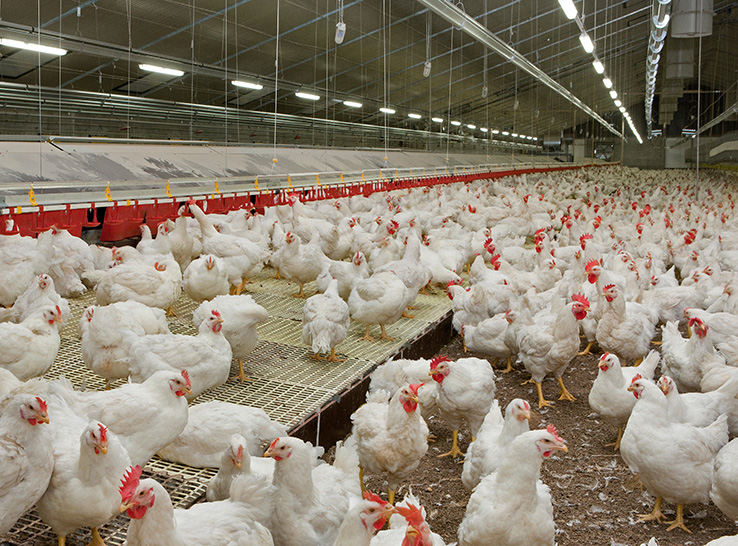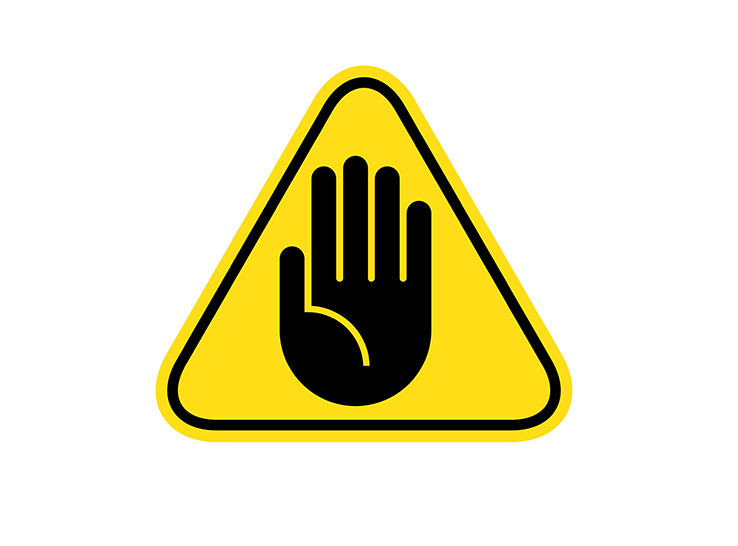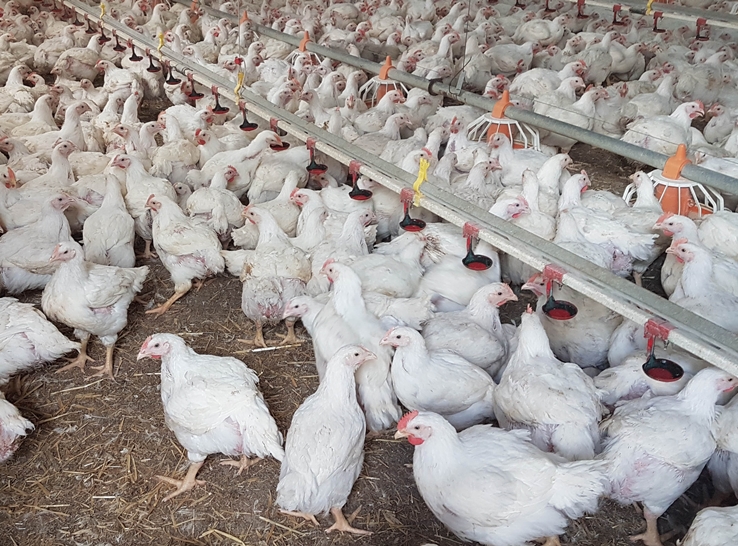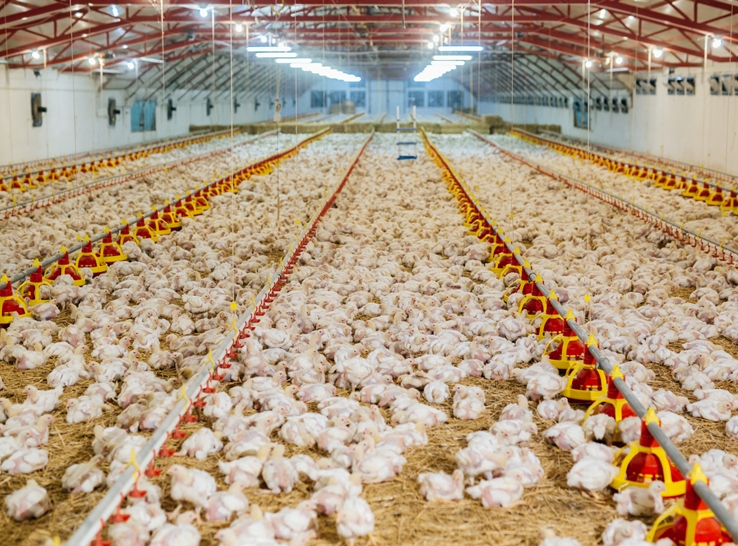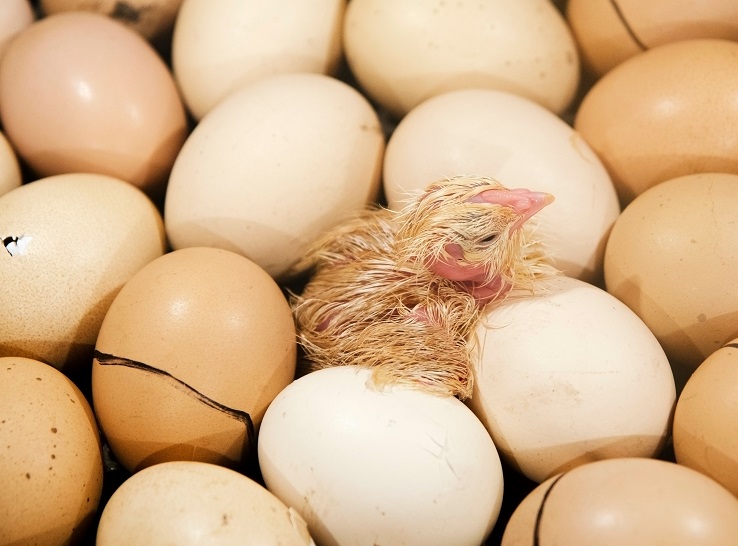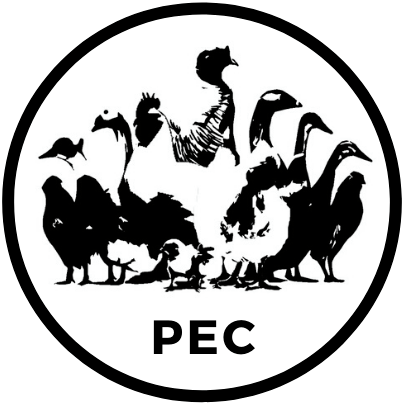By Gregory Archer, PhD, associate professor and extension specialist at Texas A&M University, Agrilife Extension
Biosecurity is the cheapest, most effective means of disease prevention and control available. Proper biosecurity will help to ensure the overall health and welfare of your flock.
What is “Biosecurity”?
Simply put it is protecting your birds from disease by minimizing their exposure to vectors or fomites.
What is a vector or a fomite?
A vector is something living and a fomite is something non-living that can transmit a disease. This can include things like rodents, other birds, insects, pets, shoes and other clothing, car tires, shared equipment, feed, water, dust, people, and even the air.
Vectors aid in the transmission of viruses, bacteria, parasites and other microorganisms that all can negatively impact your poultry’s health.
Biosecurity is all about controlling disease causing organisms and their spread
Quarantining your new birds and sick birds is important for flock health. Obtaining birds from a reliable source preferably an National Poultry Improvement Plan (NPIP) approved source. Keeping your birds away from wild birds, especially waterfowl.
Good flock management reduces stressors which can increase disease susceptibility. Ensuring fresh feed, clean water, good ventilation, and overall bird comfort is important to a good bio-security plan.
Controlling exposure of your birds to other people especially those who have birds or are around birds. Always ask if people have been around other birds before allowing them around your birds. Controlling contact between your birds and other farm animals and pets.
Proper cleaning and sanitation of equipment, coops, tools, etc is very important to minimize exposure of vectors to your birds. This should be done regularly to insure optimum health of your flock.
Isolation + flock management + traffic control + cleaning & sanitation = good biosecurity
Isolation of current birds and procurement of new birds
It is recommended that any new birds obtained be quarantined for at least 4 weeks before exposing your flock to new birds.
- Obtain birds from a reliable source (such as a NPIP hatchery or breeder)
- Birds from other sources may appear healthy but could be sick or carry disease Do not mix birds of differing ages
- DO not mix bird species, as some may be asymptomatic to diseases that are lethal to others
Any sick bird should be isolated from others as soon as possible
- Isolated birds should always be cared for after healthy birds
- It is important to wash hands, footwear, and change clothes after caring for sick birds
Minimize exposure of your birds to wild birds, especially waterfowl
- Do not place wild bird feeders in areas your flock has access to
- Remove old wild bird nests from areas your flock access, as wild birds may reuse nests
- Don’t allow your birds to access water that wild waterfowl use, especially during migration
Reduce exposure of your birds to rodents and other pests
- Keep feed secured off-ground and inside containers
- Clean up any spilled feed
Make sure any visitors who also have birds or been around birds within 72 hours wear appropriate PPE or sanitize footwear and wash hands before interacting with your birds.
Flock management
Manure management/disposal plan
- Assess your site and options for removing, storing, and disposing of manure and litter, which might be onsite or offsite
- Follow any state or local laws that apply
- Take into account any environmental concerns with how manure is handled
Consider wildlife, insect, and rodent control in relation to any disposal or storage method A plan for mortality disposal
- Ensure disposal methods follow all local, State, and Federal laws Collect all poultry carcasses as soon as possible
- Store or dispose of carcasses in a way that does not attract other animals
- Collection bins should have tight-fitting lids, and burial pits or compost piles should be covered to deter scavengers
- Don’t use the same equipment for feeding, manure and carcass handling, and animal handling, unless you clean and disinfect
- Disposal methods may include composting, incineration, burial, or rendering
- For flocks of all sizes, onsite disposal is more biosecure than taking carcasses offsite
Proper husbandry and disease prevention
- Appropriate vaccination, using probiotics or other supplements properly, observing for symptoms of illness regularly
- Providing fresh feed and water
- Proper predator, rodent, pest, and parasite control
Traffic Control
Make sure that everyone who interacts with your birds or visits your property follow good biosecurity practices
- Either provide footbaths or boot covers or ensure all visitors do not wear footwear they have worn around other birds
- If sharing tools or equipment make sure to properly disinfect before use
- When going to feed stores, wear footwear and clothes you do not wear around your birds, as this is a congregating point for poultry owners
- If you visit other birds make sure to follow good bio-security practices
Cleaning and Disinfection
Regular cleaning and disinfection is important for the health of your birds
- Enclosures must be empty for a thorough cleaning
- Move poultry to a separate area before cleaning if birds on site
- Remove all litter, manure, and other debris
- Follow the 5 Steps of Cleaning and Disinfection (shown below)
- Making sure to allow drying before any disinfected is applied as to not dilute the product and reduce effectiveness
- Use products that are effective against Avian influenza and other poultry diseases (minimally use a Quaternary Ammonia or 10% bleach solution)
- Leave enclosure empty until fully dry before returning any birds
- Make sure to also clean feeders and waterers regularly
- Always wash your hands
The five steps to cleaning and disinfection
- Dry clean
- Soap
- Rinse
- Dry
- Disinfect
What to do when you have mortality in your flock?
Even if you practice the best bio-security and best management in raising your birds properly everyone who has poultry will unfortunately experience the loss of birds. The first thing to determine is whether the mortality is “normal” or there is a more serious issue.
When should you worry about mortality?
If the mortality is a larger percentage of your flock or a larger percentage are sick/dying above typical levels.
Is the mortality related to something other than disease?
Is the mortality related to predators, weather, or some other external factors? If so, you will need to address these issues but you do not need to report it to animal health officials.
Keep records of when you see signs of illness. This will allow you to better track and possibly diagnose the issue.
Report non-normal illness or mortality to animal health officials in your state Veterinarian, Cooperative Extension Office, State Veterinarian or Animal Health Office, State Diagnostic Lab, USDA are all possibilities.
Example of a state’s (Texas) reportable poultry diseases*
- Avian influenza – Orthomyxoviruse
- Avian infectious laryngotracheitis – Orthomyxovirus, herpesvirus Avian tuberculosis – Mycobacterium avium serovars 1,2
- Duck virus hepatitis – Picornavirus
- Fowl typhoid – Salmonella gallinarum
- Highly pathogenic avian influenza (fowl plague) – Orthomyxovirus (type H5 or H7) Infectious encephalomyelitis – Arbovirus
- Ornithosis (psitticosis) – Chlamydia psittaci Pullorum disease – Salmonella pullorum
- Newcastle disease (VVND) – Paramyxovirus-1 (PMV-1)
- Paramyxovirus infections (other than Newcastle disease) – PMV-2 to PMV-9
*States may vary in what diseases they consider reportable
Other Related Resources
USDA Animal and Plant Health Inspection Service. Protect the Flock Program
https://www.aphis.usda.gov/aphis/ourfocus/animalhealth/animal-disease-information/avian/defend-the-flock-program/defend-the-flock-program
USDA Animal and Plant Health Inspection Service. Avian Influenza
https://www.aphis.usda.gov/aphis/ourfocus/animalhealth/animal-disease- information/avian/avian-influenza
Previous PEC Newsletter Topics
Avian Influenza https://www.canva.com/design/DAE4_yhKO6o/view
Sickness Behavior in Chickens https://www.canva.com/design/DAEbqkOAix0/view
Poultry parasites: Northern Fowl Mites https://www.canva.com/design/DAFWpYF6KSE/view
Poultry Parasites: Bed Bugs https://www.canva.com/design/DAFv9xrm0So/view
Salmonella in backyard poultry https://www.canva.com/design/DAFWpYF6KSE/view
Poultry Extension Website. Small and Backyard Poultry
Migratory Bird Flyways in North America
https://www.fws.gov/media/migratory-bird-flyways-north-america
Example of a State’s reportable disease list. Texas Animal Health Commission.
https://texreg.sos.state.tx.us/fids/201404473-1.pdf
To view the full Poultry Extension Collaborative newsletter, Vol 44, click here.
Editor’s note: Content on Modern Poultry’s Industry Insights pages is provided and/or commissioned by our sponsors, who assume full responsibility for its accuracy and compliance.

